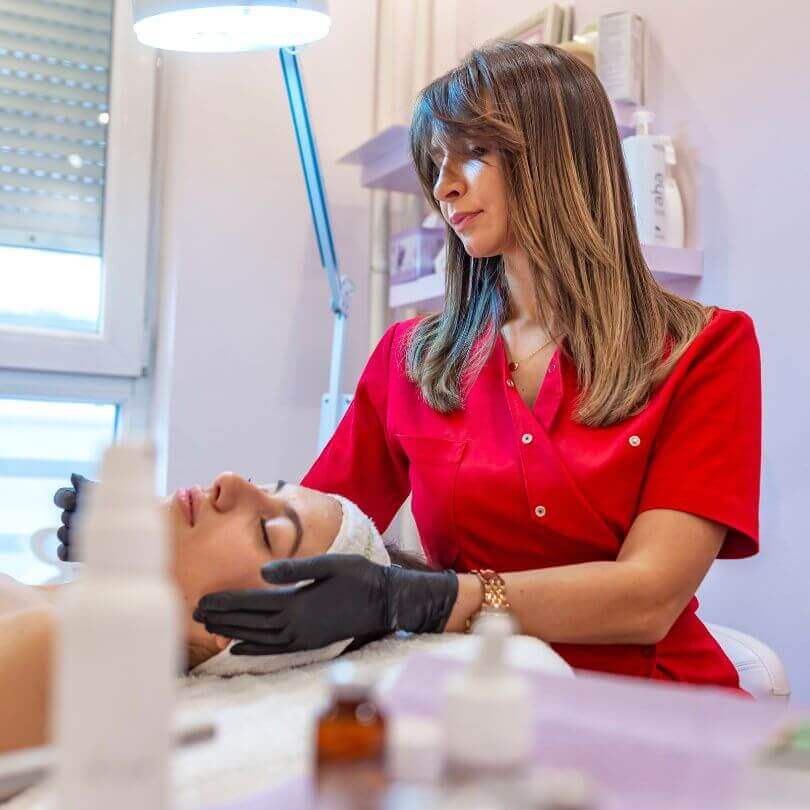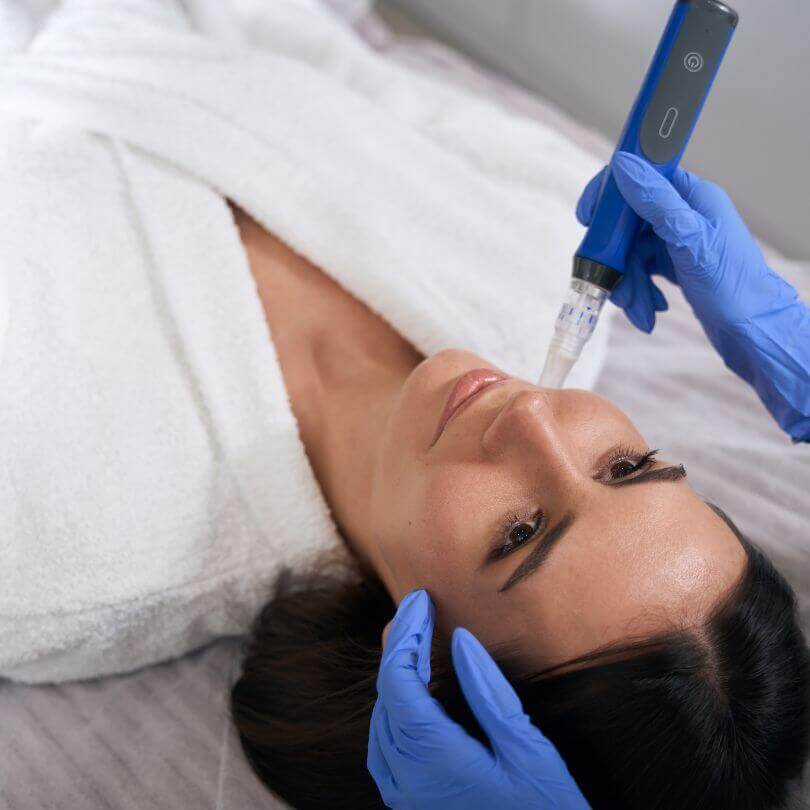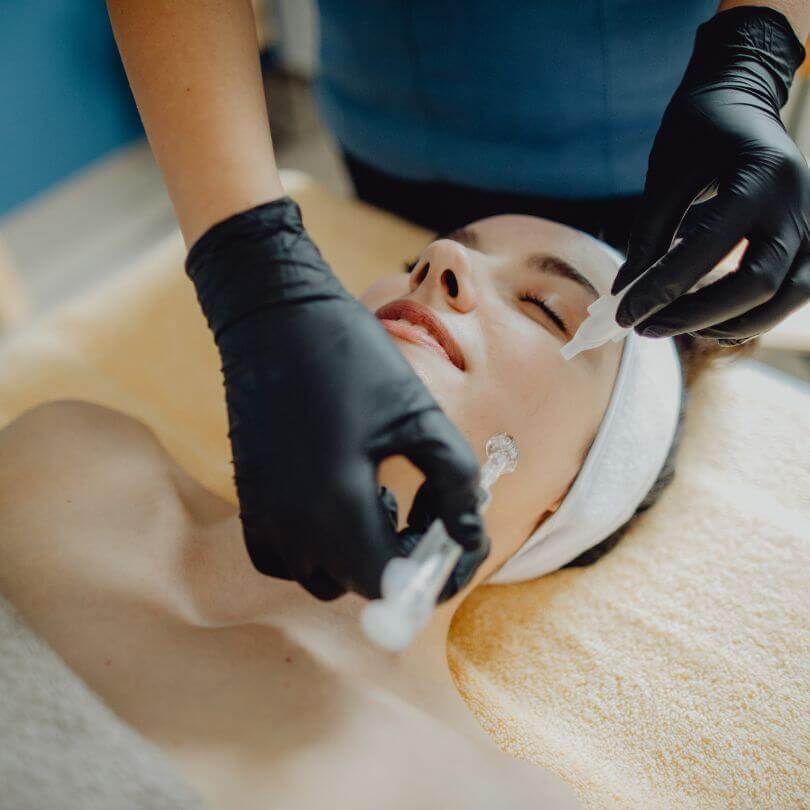Microneedling Pigmentation is a cutting-edge technique that has gained significant traction in the beauty industry for its remarkable ability to address various pigmentation issues effectively. By utilizing microscopic needles to create controlled micro-injuries on the skin’s surface, this procedure aids in the production of collagen and elastin, resulting in a remarkable improvement in the skin’s texture, tone, and overall appearance. With its minimally invasive nature and impressive results, microneedling pigmentation has become a go-to solution for individuals seeking to combat pigmentation problems such as age spots, melasma, and sun damage.

What is Microneedling?
Microneedling is a minimally invasive cosmetic procedure that involves using tiny needles to create controlled micro-injuries in the skin. These micro-injuries stimulate the production of collagen and elastin, two proteins responsible for the skin’s strength and elasticity. The procedure is also known as collagen induction therapy.
Definition
Microneedling is a procedure that uses a device containing several tiny needles to create controlled micro-injuries in the skin. These micro-injuries prompt the skin’s natural healing process, promoting collagen and elastin production.
Purpose
Microneedling is primarily used for improving the appearance of various skin concerns, such as pigmentation issues. The procedure can help reduce the visibility of dark spots, melasma, sunspots, and uneven skin tone caused by excess pigmentation. Microneedling can also improve skin texture, reduce the appearance of scars, and minimize the signs of aging like fine lines and wrinkles.
Benefits
The main benefit of microneedling for pigmentation is its ability to stimulate collagen and elastin production, which can lead to a more even skin tone. Additionally, microneedling enhances the absorption of topical pigmentation treatments, allowing for more effective results. The procedure is minimally invasive, has a shorter recovery period compared to more invasive treatments, and can be performed on various skin types and pigmentation concerns.
Understanding Pigmentation
What is Pigmentation?
Pigmentation refers to the coloring of the skin, primarily caused by the presence of a pigment called melanin. Melanin is produced by cells called melanocytes and is responsible for determining the color of our skin, hair, and eyes. The distribution and activity of melanocytes influence the pigmentation of our skin.
Causes of Pigmentation
Various factors can contribute to the development of pigmentation issues. These include sun exposure, hormonal changes (such as during pregnancy or menopause), genetics, certain medications, and skin trauma. Excessive production or uneven distribution of melanin can lead to hyperpigmentation, where certain areas of the skin become darker than the surrounding skin.
Types of Pigmentation
There are different types of pigmentation that can affect the skin. Some common types are:
- Hyperpigmentation: This refers to the darkening of certain areas of the skin due to excess melanin production. Examples include melasma, sunspots, and post-inflammatory hyperpigmentation.
- Hypopigmentation: This is the loss of skin color, resulting in lighter patches on the skin.
- Vitiligo: In this condition, the immune system attacks and destroys melanocytes, causing depigmented patches on the skin.

Microneedling for Pigmentation
Overview
Microneedling for pigmentation involves using a microneedling device to create controlled micro-injuries in the skin. This triggers the skin’s natural healing response and promotes the production of collagen and elastin. By increasing collagen and elastin, microneedling can help reduce the appearance of pigmentation issues.
How Microneedling Works for Pigmentation
Microneedling promotes the production of collagen and elastin by causing controlled micro-injuries in the skin. These micro-injuries stimulate the release of growth factors and increase blood flow to the treated area. The increased production of collagen and elastin helps to improve skin texture and even out pigmentation.
Microneedling also enhances the penetration of topical pigmentation treatments. The tiny channels created by the microneedles allow the active ingredients in these treatments to penetrate deeper into the skin, leading to more effective results.
Effectiveness
Microneedling has been proven to be effective in reducing the appearance of pigmentation issues. Clinical studies have shown that microneedling can significantly improve the appearance of melasma, hyperpigmentation, sunspots, and other types of pigmentation. However, the effectiveness may vary depending on the individual’s skin type, the severity of the pigmentation, and the number of treatments performed.
Preparation for Microneedling
Skin Evaluation
Before undergoing microneedling for pigmentation, it is essential to undergo a thorough skin evaluation by a skilled professional. This evaluation helps determine the suitability of the procedure for your specific pigmentation concerns and skin type. The professional will assess your medical history, skin condition, and any underlying skin conditions that may affect the outcome of the treatment.
Pre-treatment Guidelines
To ensure optimal results and minimize the risk of complications, it is crucial to follow pre-treatment guidelines provided by your skincare professional. These guidelines may include avoiding direct sun exposure, tanning beds, and certain skincare products in the days leading up to the procedure. The professional may also recommend discontinuing the use of certain medications or topical treatments that can increase the skin’s sensitivity.
Selecting a Skilled Professional
Selecting a skilled and experienced professional is crucial for the success and safety of your microneedling treatment. Look for a licensed aesthetician or dermatologist who specializes in microneedling and has a proven track record of successful pigmentation treatments. Ask for before and after photos of previous clients to assess their expertise and results.

Microneedling Procedure
Topical Anesthesia
Before the microneedling procedure begins, a topical anesthetic is applied to the treatment area to minimize any discomfort. The anesthetic needs some time to take effect, typically around 30 minutes, before the procedure can commence. The topical anesthesia helps ensure a more comfortable experience for the client during the microneedling process.
Microneedling Device
The microneedling device used in the procedure plays a significant role in achieving optimal results. The device features tiny, sterile needles that create controlled micro-injuries in the skin. The depth of the needles can be adjusted based on the specific pigmentation concern being treated and the client’s skin type.
Treatment Duration
The duration of the microneedling procedure varies depending on the size of the treatment area and the specific pigmentation concern. In general, a single session can take anywhere from 30 minutes to an hour. However, it is important to note that multiple sessions may be necessary to achieve the desired results, especially for more severe pigmentation issues.
Aftercare and Recovery
Post-treatment Instructions
After microneedling for pigmentation, following proper post-treatment instructions is crucial to ensure optimal healing and results. These instructions may include avoiding sun exposure, applying a moisturizer or specialized post-treatment cream, refraining from using certain skincare products or treatments, and keeping the treatment area clean and protected.
Downtime and Recovery Period
Microneedling is a minimally invasive procedure, and the downtime is generally minimal. After the procedure, you may experience redness and slight swelling, similar to a mild sunburn, for a few days. The skin may also feel sensitive and tight during this time. Most individuals can resume their regular activities immediately after the procedure.
Expected Results
The results of microneedling for pigmentation are not immediate and may take time to become noticeable. It typically takes several weeks for the skin to regenerate and for collagen and elastin production to increase. Over time, you can expect to see an improvement in the appearance of pigmentation issues, with the skin becoming more even-toned and smoother. The exact results will vary depending on the individual and the severity of the pigmentation.
Risks and Side Effects
Possible Risks
While microneedling is generally a safe procedure, there are some potential risks associated with it. These risks include infection, scarring, allergic reactions, skin irritation, and changes in pigmentation. However, when performed by a skilled professional and with proper aftercare, the risk of these complications is minimal.
Common Side Effects
Common side effects of microneedling for pigmentation include redness, swelling, and sensitivity in the treatment area. These side effects are temporary in nature and usually subside within a few days. It is essential to follow post-treatment instructions carefully to minimize potential side effects.
Managing Side Effects
To manage the side effects of microneedling, it is crucial to follow the post-treatment instructions provided by your skincare professional. Applying a cold compress to the treatment area can help reduce redness and swelling. Avoiding direct sun exposure, wearing sunscreen, and using gentle skincare products can also aid in the healing process and prevent further irritation.
Combining Microneedling with Other Treatments
Chemical Peels
Combining microneedling with chemical peels is a common practice to maximize the results of both treatments. Chemical peels involve the application of a chemical solution to the skin to cause controlled exfoliation and promote skin renewal. When used in combination with microneedling, chemical peels can further improve pigmentation, skin texture, and overall skin appearance.
Microdermabrasion
Microdermabrasion is another procedure that can be combined with microneedling to enhance pigmentation treatment. Microdermabrasion involves exfoliating the outermost layer of the skin using a handheld device. By removing the dead skin cells and stimulating cell turnover, microdermabrasion can help improve pigmentation and enhance the results of microneedling.
Laser Therapy
Laser therapy can also be combined with microneedling for pigmentation treatment. Laser treatments target the excess pigmentation in the skin, effectively reducing the appearance of pigmentation issues. When used in conjunction with microneedling, laser therapy can further enhance the therapeutic effects and results.
Maintenance and Long-Term Results
Number of Sessions
The number of microneedling sessions required to achieve optimal results for pigmentation varies depending on the individual’s specific concern and skin type. In general, multiple sessions are needed, with an interval between each session to allow the skin to heal and regenerate. A skincare professional will determine the recommended number of sessions based on a thorough evaluation of your skin condition.
Interval between Sessions
The interval between microneedling sessions for pigmentation is typically around 4 to 6 weeks. This timeframe allows the skin to fully heal and for collagen and elastin production to stimulate before undergoing another treatment. Following the recommended interval is crucial to ensure the skin has enough time to recover between sessions.
Long-Term Pigmentation Management
While microneedling can provide significant improvements in pigmentation, it is important to understand that long-term pigmentation management requires ongoing skincare maintenance. This includes wearing sunscreen daily, avoiding excessive sun exposure, following a regular skincare routine, and maintaining a healthy lifestyle. Consistency in skincare practices can help minimize the recurrence of pigmentation issues.

